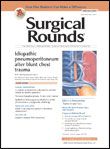Cholecystectomy for Gallstone Pancreatitis: Does Timing Matter?
When gallstones are the source of acute pancreatitis, the condition can be life threatening.

When gallstones are the source of acute pancreatitis, the condition can be life threatening.
To prevent recurrent pancreatitis, consensus-based guidelines from the British Society of Gastroenterologists (BSG) and the American Gastroenterological Associations (AGA) recommend performing cholecystectomy during the primary admission to the hospital or within no more than 4 weeks of discharge. However, controversy still surrounds the timing of the surgery, since some surgeons believe performing cholecystectomy while the pancreas is inflamed increases complication rates.
Using a multicenter review process, researchers in the United Kingdom specifically examined whether adherence to current BSG guidelines that advise performing cholecystectomy within 2 weeks of discharge can prevent recurrent pancreatitis with minimal surgical complications.
Over a 2-year period, the study authors followed a total of 523 patients who presented with an initial episode of gallstone pancreatitis. According to the investigators, 363 patients (69%) underwent cholecystectomy. Of those patients, 72 had their surgeries performed within the time parameters of their primary admission or within 2 weeks of discharge, while the remaining 291 underwent cholecystectomy more than 2 weeks after their primary admissions.
Overall, 7% of the patients experienced a cholecystectomy-related complication, though more than twice as many complications occurred in those whose cholecystectomies were performed within the guideline parameters. Nevertheless, delaying cholecystectomy beyond those parameters increased the risk of readmission for recurrent pancreatitis prior to surgery.
As a result, the authors concluded that cholecystectomy performed in accordance with the BSG time parameters significantly reduces the recurrence of pancreatitis, but may increase the risk of surgical complications.
